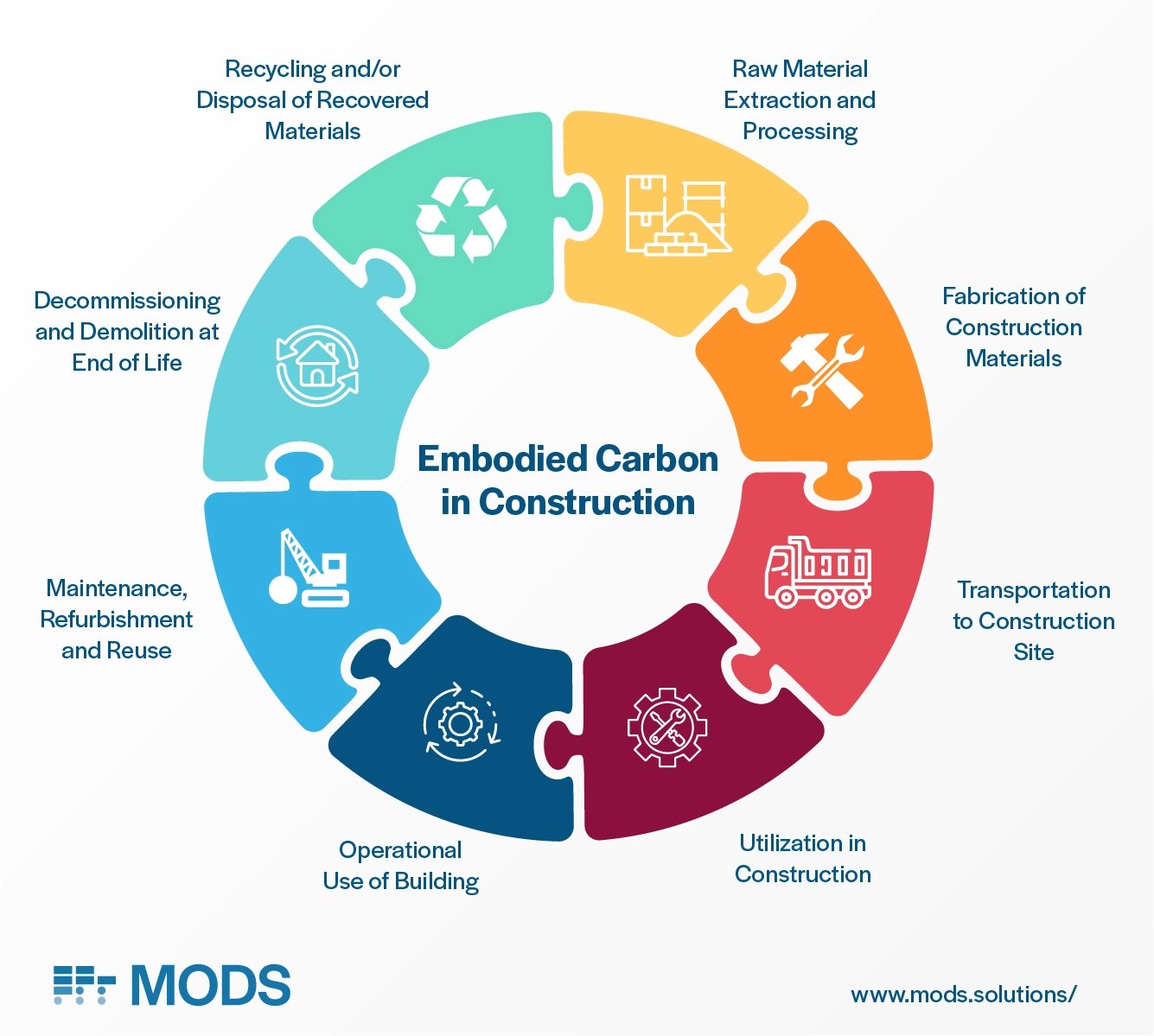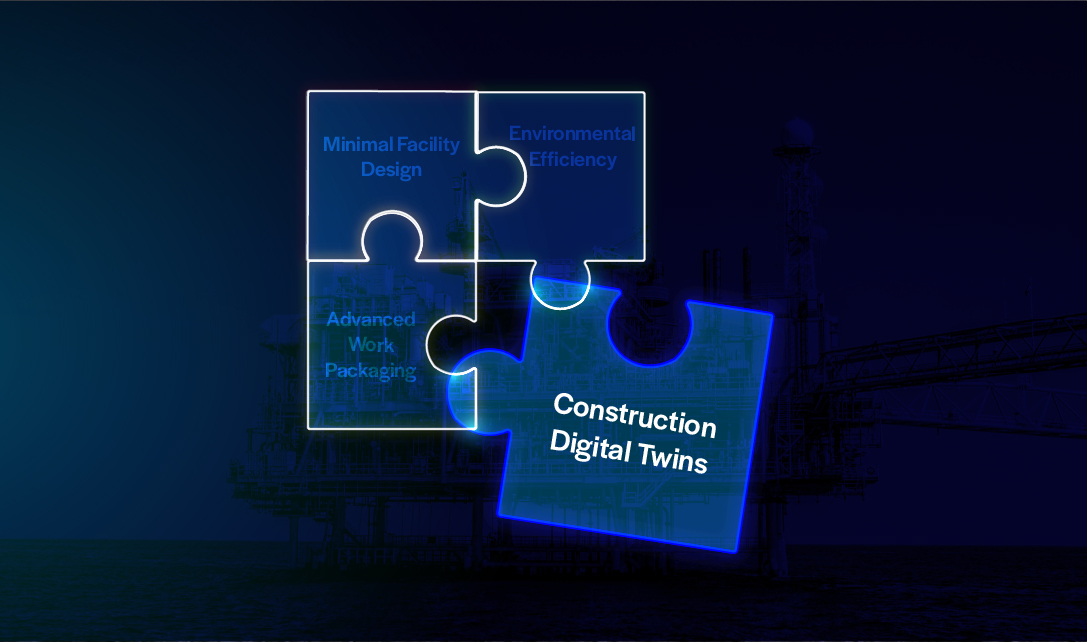Digital Completions in Plant Modifications and Upgrades
Unlike greenfield or any new build construction projects, plant modifications and upgrades present a unique set of challenges. Work is carried out...
3 min read
 Lisa De Vellis, PE
:
Jun 16, 2022 1:27:40 PM
Lisa De Vellis, PE
:
Jun 16, 2022 1:27:40 PM

This blog is the first in a four-part series looking at the following future trends in energy sector facilities:
Facilities of the future will capitalize on data-driven technological advances, prioritizing modern design and construction towards a more sustainable energy future. This blog focuses on how digitization and more advanced digitalization tools help achieve environmental efficiency in energy-sector construction and project work. It is divided into the following parts:
Sustainability consists of three pillars: economic, social and environmental. It is the latter that is most commonly discussed. With regards to future energy-sector development, environmental considerations continue to be a hot-button topic as multilateral and state governance as well as societal pressures push towards not only decarbonization but net zero.
EPC contractors and owner-operators are embracing sustainability trends. Decarbonization efforts in oil and gas are increasingly important as high-level symposiums focus on the simultaneous increase of productivity and environmental efficiency in both brownfield and greenfield construction execution and related project work.
Environmental efficiency in the energy sector may have an oxymoronic ring to it. However, environmental efficiency is an undeniable and, frankly, unavoidable trend. And rightly so.
To reconcile these two terms, environmental efficiency and energy sector development, one must understand what the carbon footprint in a construction project entails. Globally, the building and construction industries contribute nearly 40 percent of energy-related carbon emissions, 11 percent of which comes from something called embodied carbon.
Embodied carbon is the emissions related to the materials and construction processes throughout a project’s lifecycle from fabrication to transportation and through construction. It also includes the carbon emissions generated throughout the operation of the building/asset through to deconstruction. So materials are a pretty big deal when it comes to emissions and environmental efficiency in construction.

The World Green Building Council’s CEO suggests the sector focuses on three things to lower this large contribution to carbon emissions: leadership, procurement and innovation. In tangible terms, and directly related to workflow and, hence, environmental efficiency, procurement is an obvious focal point.
Otherwise referred to as materials or supply-chain management, procurement practices are increasingly adopting circular economy principles. These principles revolve around waste reduction and reuse in support of streamlining workflows and resources as part of increasing environmental efficiency.
But it’s more than that. When committed to a digital transformation (DX) strategy, EPC contractors and owner-operators alike can use software solutions to manage their materials’ value-chains more effectively.
Digital solutions including barcoded materials, or “data passports” as the World Green Building Council calls them, not only assist with workflow management from fabrication through construction, but can even track materials for future reuse in other projects. As energy-sector construction projects start to use more modular components, documenting this reuse potential underscores the circular economy philosophy and advances environmental efficiency potential.
In addition to carbon outputs associated with the materials’ life-cycles, construction equipment also matters. Optimizing use of construction equipment, when workflows are coordinated to a T so as to minimize downtime, can reduce the contributing carbon footprint in a project by up to 50 percent.
Equipment-use parameters having the greatest impact on emissions are: using the appropriate equipment, transport and maintenance of said equipment and intensity of use. Increased efficiency of use can significantly impact a project’s carbon footprint.
With construction materials contributing up to 11 percent of global carbon emissions and cement, alone, a further 8 percent, managing supply-chains, schedules and workflows as efficiently as possible is of paramount importance towards increasing environmental efficiency of industrial construction projects.
The importance of environmental efficiency in the construction carbon footprint is undeniable. Environmental efficiency in the context of industrial construction projects is inextricably linked with workflow productivity and materials management.
Data-driven technological solutions offer decarbonization pathways for oil and gas and for broader energy-sector projects. Digital decarbonization pathways, including both software and hardware, are the key to advancing environmental efficiency as an integral part of a broader DX journey. The energy transition and Industry 4.0 place this expectation on EPC contractors and owner-operators. And the societal push remains palpable.
Materials management software is only one route. More comprehensive packages include activity management and Advanced Work Packaging (AWP) solutions that streamline workflows and processes, with environmental benefits owing to things such as reduced downtime and improved scheduling. Tighter construction schedules mean less waste and, thus, a reduced carbon footprint.
This leads us aptly into our next Future Trends blog, where we discuss the advantages of AWP.

Unlike greenfield or any new build construction projects, plant modifications and upgrades present a unique set of challenges. Work is carried out...

Turnarounds and shutdowns are among the most critical—and stressful—phases in the management and operation of industrial assets. These planned...

Offshore decommissioning and asset retirement present significant logistical, regulatory, safety, fiscal and reputational challenges. The process of...

This blog is the second in a four-part series looking at the following future trends in energy sector facilities:

This is the final blog in our four-part series addressing the following energy-sector development trends:

This blog is the third in a four-part series looking at the following energy-sector development trends: